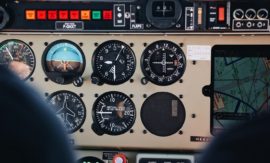Intended learning outcomes: Explain sequencing and its objectives.
Sequencing arranges the jobs in the inventory of work on hand in a particular series order.
A clever sequence of operations can reduce setup time. This is one of the essential objectives of sequencing. If the individual orders arrive randomly, in order to choose a sequence with minimal setup time, there has to be a queue. However, this increases lead times, which is not an option with certain critical products. Frequently, however, one of the first operations, if not the first itself, often uses fully utilized capacities, so that saving setup time due to good sequencing can contribute significantly to reducing lead time. Here, it is appropriate to sort and combine the orders waiting for release right at the point of release according to the sequencing criterion for the corresponding operations. In other cases, the situation is more complex. Sequencing is thus often a compromise among the various aspects and criteria of shop floor control.
If setup time reduction is not the chosen strategy, other objectives and rules of priority (see Section 14.3.1) will be selected. In shop floor control, these must be transparent and understandable for all persons involved. They can have the opposite effect, if they are applied incorrectly.
Detailed sequencing is indispensable for flexible manufacturing systems (FMS) under high load conditions, since the aim, due to costs and especially deadline reasons, is to avoid production interruptions due to order changes. Since information technology support in flexible manufacturing systems means that all data on the necessary time requirements are always available, a company may consider automating sequencing. This would still have to be an interactive process, however, since many decision-making rules arise on an ad hoc basis, grounded in the experience of the machine operators. These cannot be translated explicitly into rules that can be applied automatically.
Algorithms for sequencing constitute a field of study in operations research and in artificial intelligence and will not be presented here. Refer to [Sche98b].
Course section 15.2: Subsections and their intended learning outcomes

15.2 Shop Floor Control — Production Activity Control (PAC) — Manufacturing Execution System (MES)
Intended learning outcomes: Describe the issuance of accompanying documents for production. Explain operations scheduling, dispatching, and finite forward scheduling. Present sequencing methods.

15.2.1 Issuance of Accompanying Documents for Production
Intended learning outcomes: For a production order, identify the shop packet. Describe shop order routing, operation card, parts requisitions and picking list.

15.2.2 Operations Scheduling, Dispatching, and Finite Forward Scheduling
Intended learning outcomes: Produce an overview on Operations scheduling and dispatching. Explain finite forward scheduling.

15.2.2b The Planning Board and the (Electronic) Control Board (Leitstand)
Intended learning outcomes: Describe the loading of production resources in the form of a planning board before and after a new entry to orders on hand. Identify the (electronic) control board (Leitstand).

15.2.3 Sequencing Methods
Intended learning outcomes: Explain sequencing and its objectives.
